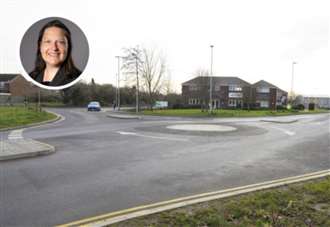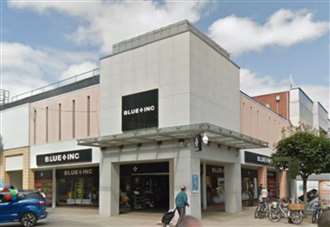-
 play_arrow
play_arrow
Kl 1 Radio Local radio for west Norfolk
-
 play_arrow
play_arrow
KL DISCO KL Disco Playing Disco Music from the 70's onwards.24/7
-
 play_arrow
play_arrow
KL COUNTRY KL COUNTRY Playing New and Classic Country Music 24/7
-
 play_arrow
play_arrow
KL ROX KL ROX The best of New and Classic Rock.24/7
-
 play_arrow
play_arrow
KL SUMMER Summer Vibes 24/7 from KL1 Radio across West Norfolk
-
 play_arrow
play_arrow
KL CLASSICAL Your Symphony Starts Here
-
 play_arrow
play_arrow
KL CHILL Just Chill!
-
 play_arrow
play_arrow
KL POP The Best POP Hits all day Long!
-
 play_arrow
play_arrow
KL XTRA KL XTRA
music_note
Council’s proposal to turn street lights off on industrial estates branded ‘anti-business’ by councillor


A councillor has raised concerns about lighting after plans were revealed to turn some off on industrial estates.It comes as Norfolk County Council said a project aimed at upgrading street lighting to make it more energy efficient has been completed almost a year ahead of schedule.The change is set to see CO2 emissions on lighting maintained by the council cut by more than 200 tonnes a year.
It is happening at the same time that street lights could potentially be turned off on a number of industrial estates in Lynn.This includes Horsley’s Fields on the Hardwick Narrows, Hamburg Way on the North Lynn Industrial Estate and Hansa Road on the Hardwick Industrial Estate.A public consultation is currently live which gives people the chance to have their say on the proposals for Norfolk County Council’s budget for next year.
Norfolk county councillor Alex Kemp has said that turning off the street lights would be bad for businesses. She said: “I think this measure is anti-business. It’s difficult to see already because the lights are so dim.“Turning the lights off could deter people away from the shops and the gym too. “We want to be encouraging people to be using these areas. I don’t this will help businesses who are already cash strapped.”
Norfolk County Council has said that if proposals are approved, the street lights will not be turned off until April next year.A spokesperson from the county council said: “We will feed back the findings from our consultation to our county councillors as part of the evidence they will use to help them come to a decision about our budget proposals.“Final decisions will be made by the council on 18 February 2025.”
Cllr Andrew Jamieson, Norfolk County Council’s cabinet member for finance, said: “No one should be under any illusion about just how serious the financial challenges faced by local councils have become: demand for services goes up, as do costs, and long-term funding from the government remains unclear. “Many of the savings that we are making are because of continuing innovation within our services: getting more for less. However, some of the savings we are proposing are not savings we want to make but are forced on us by significant increases in demand and demographic changes in a climate of continued government underfunding.“But if we are to make these tough decisions we have to do so in a way that has the minimum impact on our residents, and that’s why it’s so important people let us know what they think of these proposals and how they will affect them.“That knowledge will help us plan our savings in a way that protects the most vulnerable and allows our residents to continue living their lives with as little impact as possible.”Meanwhile, the work to upgrade street lighting, carried out by Amey on behalf of Norfolk County Council, replaced traditional High Intensity Discharge (HID) lighting with the latest generation of LED lanterns. It started in August 2023 and involved replacing 16,800 HID lights with 15,531 LEDs.The change will mean that from this month, 100% of Norfolk County Council’s street lighting will use low-energy LEDs.Cllr Graham Plant, cabinet member for highways infrastructure and transport, said “I’m delighted that this ambitious project has completed almost a year ahead of schedule.The upgrades mean we’re keeping streets lit while avoiding hundreds of tonnes of carbon dioxide being pumped into the atmosphere each year. “We’re also saving taxpayer’s money by reducing the amount of energy being used and paid for.”The innovative new lanterns can be controlled by a Central Management System (CMS) which allows the streetlighting to be adapted to changing traffic patterns and needs. The CMS also allows remote monitoring which will reduce the need to send inspectors out to monitor the lighting, saving time, money and reducing the carbon emissions of those teams travelling across the county.”The work was funded by a capital commitment of £7.5 million agreed by the council’s cabinet meeting in November 2022.Nick Powell, transport infrastructure business director at Amey, said: “I’m thrilled that our streetlighting teams operating in Norfolk have delivered an outstanding service to the local authority, a year ahead of schedule. “The teams have transformed the way the streets of Norfolk are lit to ensure a reduction in carbon emissions and energy costs.”By installing a Central Management System for Norfolk County Council, we’re able to adapt and monitor the lighting in areas across the county remotely, which will achieve huge environmental and cost savings for Norfolk.”The final phase of the move to low-energy LEDs will save an estimated 1,099,032 kWh of energy per year, equating to approximately £380,000 per year at the current electricity prices.Since the first LED streetlights were installed in 2008, an estimated 71 million kWh have been saved, representing a reduction of more than 22,200 tonnes in carbon dioxide emissions – equivalent to 6.7 million litres of diesel use.
Similar posts
Upcoming shows

Ian Campfield – KL1 Afternoons
1:00 pm - 4:00 pm

Richard Dix – KL1 Drive
4:00 pm - 7:00 pm

80’s ’til 8
7:00 pm - 8:00 pm

Gary Steele – Rock Show
8:00 pm - 11:00 pm

Night Trax
12:00 am - 7:00 am
-

The UK and New Zealand are to pursue stronger defence ties and boost support for Ukraine

Catholics mourn merciful Pope after death aged 88 following stroke

Court hears of high street masturbation, man threatening train station worker and drug-drivers

Live Music – Man The Lifeboats

Breast of Friends Chairty Ball
Message Us
Copyright The Mediasite UK - 2025



